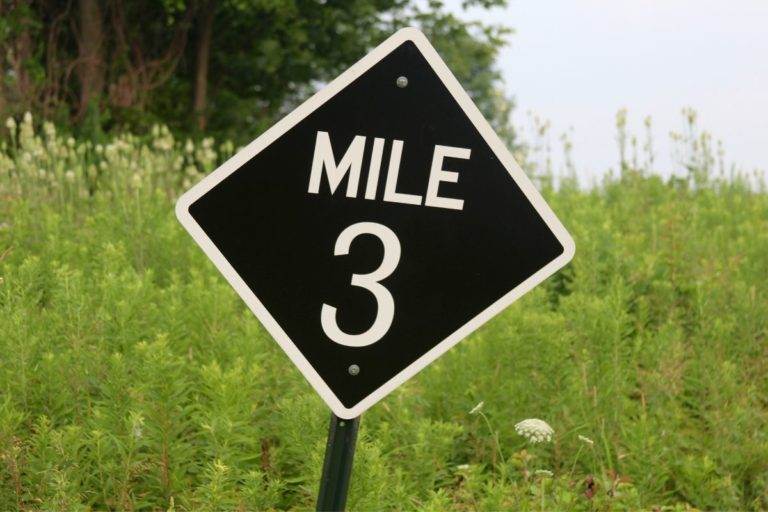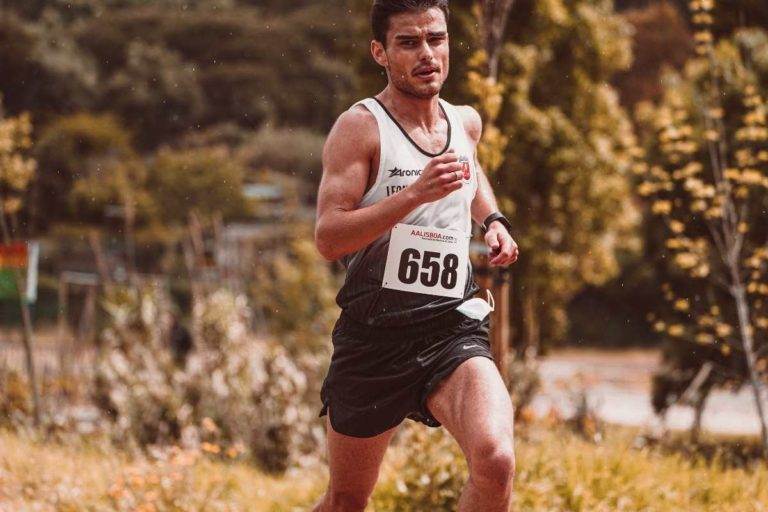How to Pace Yourself When Running (4 Simple Tips for a Successful Run)

You set out on a run, hoping to improve your fitness. Within a few minutes, you’re breathing heavily. Soon, you’ll experience a burning sensation in your chest and throat, your legs will feel weak, and your shoulders will be tight.
The remainder of the run is a battle that you want to finish as soon as possible. And you’re still stuck covering the same distance you could a month ago—not it’s getting any easier. What happened to the runner’s high people always talk about?
The truth is, it doesn’t have to be this way. You can improve your endurance and speed while having fun by mastering your running pace, and we have the tools to help you do just that.
4 Tips for Pacing Yourself While Running
Here are the top 4 things you should be doing to improve your running pace.
1. Slow Down At The Start
An experienced runner will never start off a long distanced run by sprinting, but this is a common trap that rookie runners fall into. Speed is not the goal here, distance is.
Of course, even if you start slow some discomfort is unavoidable in the beginning. Your cardiovascular system isn’t well-trained, so you’ll breathe heavily, and your legs aren’t coordinated or adapted to the mechanical load, so they’ll ache.
You may think that you always need to hurt to get in a good workout, so you may be upping the intensity without realizing that the pain is your body crying out for a rest. This frequently results in injury, which can put a pause on your training.
Starting too fast is also a sure way to get fatigued. You may be eager, so you sprint with all your might, but if that enthusiasm can be focused toward the middle of a run, it’ll make for a better experience.
So why does slow running help get you faster? Many sport coaches recommend rookie runners start much, much slower than they believe they need to.
Not only does this help them up gently, keeping you safe, but it also teaches you to have a more instinctive sense of your paces.
2. Focus On Your Breathing
Pay attention to your inhales and exhales to become more in tune with how you’re feeling and to avoid overdoing it on speed. At first, the best tool for young runners is breathing.
Run until your breathing just starts to get quick, then walk until it recovers, then repeat for the first month. With practice, you’ll discover that you can run for longer lengths of time at that breathing rate.
At this intensity level, speaking in complete sentences should be easy if you have someone to run with.
3. Endurance First, Then Speed

New runners frequently believe that the harder they run, the fitter they will become. However, this isn’t how proper training works.
Stress is just one component of the equation. Recovery is also important because it’s at this time that your body heals itself, resulting in a slightly fitter you.
And when every run is difficult, the recovery and regeneration phase of the process is slowed down or reversed.
Don’t push yourself too hard.
If you push yourself too hard many times a week, you will either stagnate, become slower, become injured, or some combination of the three.
Alternatively, if you run hard on most runs with plenty of recovery time in between, you’re probably not running frequently enough to acquire much fitness.
The key for beginner runners is to maintain a light effort. That’s enough stress to motivate you to improve, but not so much that you can’t do it most days and see actual results.
Your body is continuously developing additional structures so that it has a greater capacity and efficiency in supplying oxygen. You replace the existing you with a speedier you when you train and relax optimally.
Your bones, tendons, ligaments, and muscles take longer to adjust to the strains of running than your heart and lungs. Going too fast at this point in your running career considerably raises your risk of injury.
Your pace at the mild effort level will improve in the first few months of running. Without working much harder, you’ll be able to run faster and for longer distances.
That is not to argue that new runners can’t go fast, just that beginner runners should integrate brief accelerations into their runs.
This improves your running form and range of motion while also providing a pleasant but not exhausting challenge to your exercises.
Run interval workouts to vary your pace.
You may incorporate these short bursts of speed into your workouts by performing “striders”. In these strides, don’t try to sprint at full speed.
Instead, strive for an effort that you believe you can sustain for one to two minutes. Keep this pace up for 10 seconds, then decelerate to your normal pace and repeat until your breathing has returned to normal.
Do six to eight of these strides in the final kilometer or two of a run, after you’ve warmed up thoroughly.
4. Don’t Over-Rely On Gadgets
You may have noted that none of the above suggestions have anything to do with a precise pace, heart rate, or other quantifiable components of running.
All runners should avoid relying excessively on data from GPS watches and other devices. This is especially true for inexperienced runners, who lack the background to assist them to make sense of the numbers they’re viewing.
Listening to a watch rather than your own body is a very easy trap that rookie runners fall into, and is one that causes many injuries that could have been avoided.
Struggling to maintain a speed at which you believe you “should” be running ignores what the minutes and kilometers mean to your body.
The Bottom Line
Every runner you know and see started out as a novice. They didn’t know how to pace their runs. They progressed from frustrated rookies to a regular, dedicated runner.
You’ll get there too, as long as you keep a good pace and routine over your first few months and beyond.






